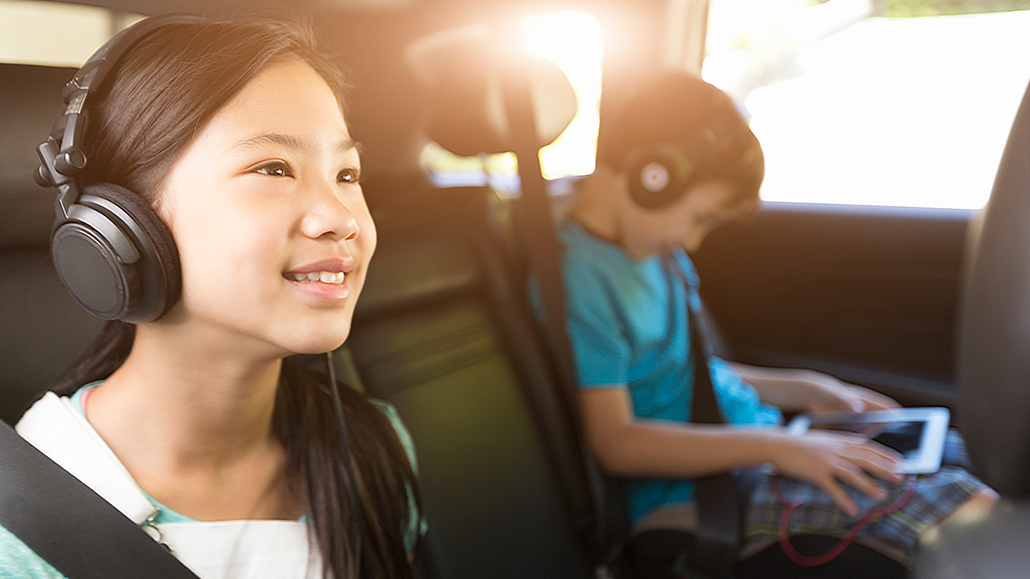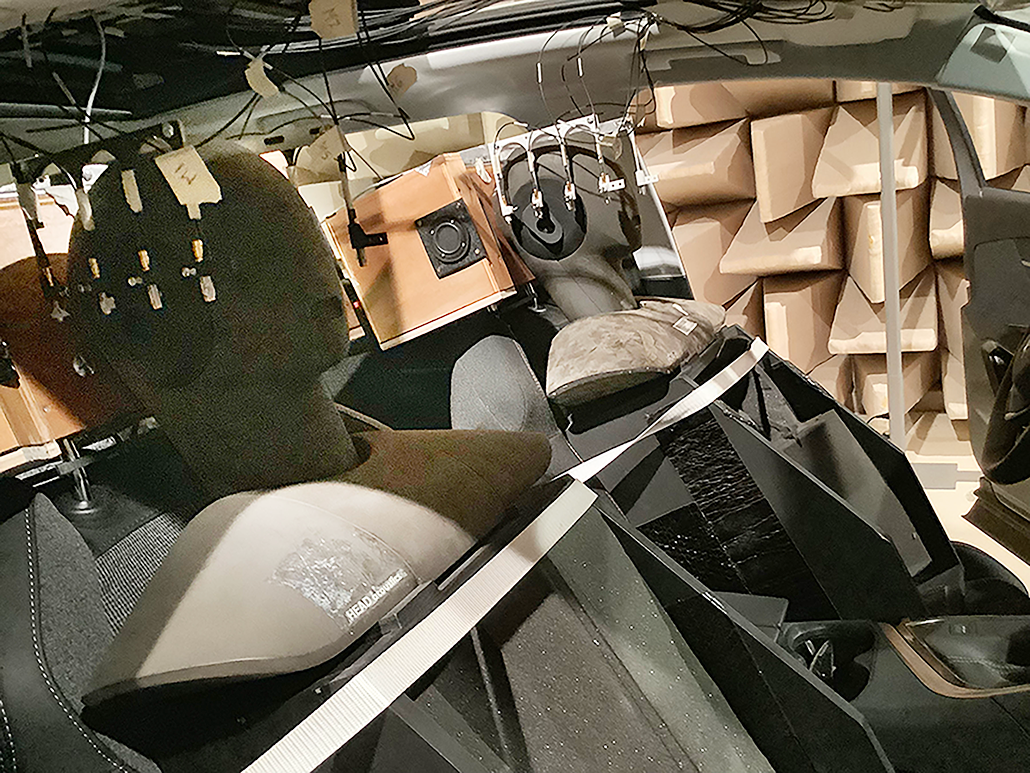Future cars may offer personal sound zones — no earphones needed
A system that adapts to conditions inside a car is bringing personal listening close to reality

Today, you wear earphones if you want to listen to music in a car without disturbing others. Someday soon, the car’s headrest may broadcast those tunes so that you can hear them but others in the car won’t have to.
Compassionate Eye Foundation/Steven Errico/DigitalVision/Getty Images Plus
Road trips can seem extra-long when someone else’s annoying music fills the car. What if you could listen to only your music without headphones and no one else would hear it? Although that may sound futuristic, the technology is closer than you might think. Researchers in France are working to deliver such personal sound zones that adapt as conditions in your car change.
Why bother? Headphones are good at controlling what you hear, but they can be uncomfortable, too. And if you crank the volume of your music up too high to drown out other noise, you risk damage to your hearing.
That’s something Jan Mayes knows a lot about. She’s a retired audiologist, a type of health care professional who specializes in hearing. Mayes is based in Vancouver, British Columbia in Canada. “Using headphones or earbuds can cause hearing loss,” she notes. And not just in the elderly. At the volume many kids listen to music, she says, “nearly 50 percent of young people aged 12 to 35 [are] at risk.”
Personal listening bubbles, or zones, inside of a car could let you hear well without having to drown out other sounds with high volumes. They also would bring many new possibilities. Everyone in a car could listen to their own audio privately. GPS alerts could go only to the driver. Passengers could make phone calls without being overheard.
Engineers are working to create these personal sound zones using multiple loudspeakers. They don’t all broadcast the same signal, but the signals are coordinated. A listener whose head is in some “sweet spot” hears high-quality sound. But as one gets farther from the sweet spot, the sound diminishes. That’s because sound waves from different loudspeakers interact to cancel out each other’s sound.
Patricia Davies is mechanical engineer at Purdue University in West Lafayette, Ind. She studies sound and perception. The noise-canceling approach works well in headphones, she says. But, she adds, “creating quiet zones anywhere in a three-dimensional space, like the inside of a vehicle, is challenging.”
One reason: Sound waves are sensitive. Changes in temperature and humidity can alter how fast the waves travel. So can the number of people in the car and other factors. A small change in even one of these can have a big impact, because the integrity of a sound zone depends on sound waves interacting in just the right way.
Still, it’s easier to create personal sound zones in cars than in other spaces. “In a car, what’s interesting is that we know where the people are,” says Manuel Melon. The loudspeakers can be built right into the headrests. Melon is an acoustician (Ah-koo-STIH-shun) — a scientist who studies sound ― at the University of Le Mans in France.
Adapting each sound zone to ambient conditions
Personal sound zones will only catch on if they work as well as headphones. If you turn on the air conditioner or pick up a passenger, the sound quality can’t go downhill. With this in mind, Melon and his team recently modified an existing system. They described it in the September 2021 issue of The Journal of the Acoustical Society of America.
The team started with a prototype sound-zone system. The two front seats in a test car each had a personal sound zone created by four loudspeakers inside the headrest. The zones were originally designed in a way that assumed the sound waves would always travel the exact same way.
First, the researchers showed that moving the seats away from their starting position diminished the quality of the sound zones. If you move the seats, the location of the sweet spot might shift slightly. In addition, sound waves from different loudspeakers might not interact in the same way. Now they may no longer effectively cancel each other out.

The researchers then set out to improve this system. To do that, they put several microphones on each side of the headrest, near where a listener’s ears would be. These microphones acted as listening devices. The researchers measured the time it took a sound wave to travel from each loudspeaker to each listening device. This gave them information about the paths the sound waves took. They did this for both headrests.
Then they plugged those measurements into an algorithm. That’s a set of mathematical rules. How this algorithm behaves depends on what measurements you put in. Here, the algorithm considered the current paths of the sound waves. That let the algorithm determine the signals each loudspeaker should play to get the best sound zone.
The team moved the seats, repeated the measurements and reran the algorithm. They did this for five different seat positions. This created high-quality sound zones for every seat position. That’s because the system adapted to how the sound waves were traveling in each case. The team expects its system to work well for any change in conditions, as long as it’s not too big.
Melon notes that the results are encouraging, but there is still more testing and engineering to do. This research has focused on sound in the lower range of what humans can hear. His team is now developing a second method for higher pitched sounds. When listening to music, you’ll need to account for both ranges.
He also points out that more research is needed on the human side of things. When it comes to sound, it’s hard to know what humans perceive as bothersome without asking them. Melon hopes that researchers who study human sound perception will join in his team’s quest to make headphones optional and road trips annoyance-free. At least when it comes to music.
This is one in a series presenting news on technology and innovation, made possible with generous support from the Lemelson Foundation.







